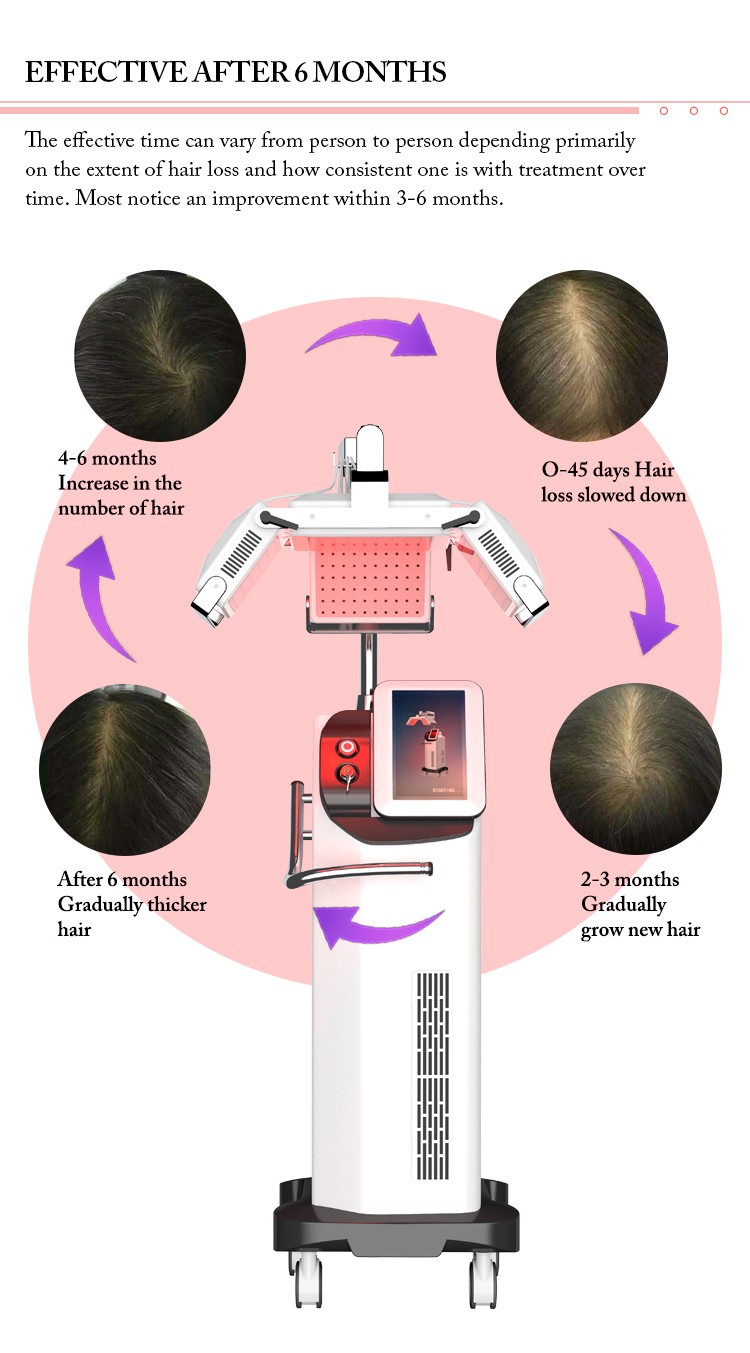Hair Loss's Nemesis!
How to determine hair fall and hair loss?
Normal hair loss does not exceed 80 hair fall per day, while hair loss often reaches more than 100 or even 200, and the number of hair loss hair fall is more and more obvious. This is the most direct basis for judging hair loss, but because the process of hair loss is not easy to observe carefully, so the concept of quantity is often vague statistics, so it is often confusing for many people who have normal hair loss but lose more hair.
Normal hair loss can also make hair thinning, but this is basically not observable to the naked eye, while this is not the case with alopecia areata, which can often be clearly observed as localized hair thinning or even baldness, such as the hairline moving up and thinning on top of the head are common symptoms of alopecia areata.
At the same time, alopecia areata has other complications. Most of the hairs lost by alopecia areata have white fatty grains at the root, while normal hair loss does not. Furthermore, although hair loss is not painful or itchy, most people with hair loss have very oily hair and the hair that falls out is generally fine and soft. Although normal hair loss may also have greasy hair, the hair that falls out is thick and strong.
Types of hair loss
Depending on the cause, hair loss is mainly divided into types such as androgenetic alopecia, baldness and scarring alopecia, in addition to some other rare types such as infectious alopecia and congenital alopecia.
Androgenetic alopecia
It is the most common type of alopecia areata, formerly known as seborrheic alopecia or early baldness, and is an androgen-dependent genetic disorder that is characterized by a persistent decrease in the density of hair on the crown of the head and, in men, by a receding hairline.
Alopecia areata
It is a sudden, limited hair loss with normal localized skin. The cause is not clear and may be related to genetic, stress, allergy and autoimmune factors.
Telogen effluvium (resting hair loss)
In normal people, at least 80% of the scalp hair follicles are in the anagen phase, and thus hair does not fall out synchronously. However, due to reasons such as post-surgery, postpartum, blood loss, shock, and severe mental stimulation, more hair follicles may enter the resting phase early, thus causing more hair to fall out synchronously.
Hair loss during the growth phase
After taking cytotoxic drugs up to a certain dose, most of the hair in the anagen phase suddenly stops growing and sheds a lot in a relatively short period of time, commonly seen in chemotherapy patients with massive hair loss or even complete hair loss.
Telogen effluvium
It is often related to the patient's hair being tied tightly into a certain hairstyle for a long time, and the hair is pulled for a long period of time, resulting in hair loss.
Scarring alopecia
Scarring of the scalp due to multiple causes, where the hair follicles are destroyed and the hair no longer grows, resulting in scarring permanent hair loss.
Sincoheren's newest hair growth device works in two weeks, consolidates in three months, and gives you strong hair in six months! To purchase, please contact us.





































